Abstract
A series of experiments were performed upon intact anesthetized dogs to determine the relevance of a variety of hemodynamic variables to the irregular ventricular performance associated with atrial fibrillation. During experimentally induced atrial fibrillation central aortic pulse pressure was measured in relation to the duration of the preceding diastolic interval, the relative degree of cycle-length change, the magnitude of the preceding aortic end-diastolic pressure, the rate of ventricular tension development (at a fixed diastolic tension), and to ventricular end-diastolic pressure. While all of the latter variables bore a significant relation to the chosen parameters of ventricular function, the most linear correlation lay with the rate of ventricular tension development. It has been suggested, as a consequence, that the irregular ventricular performance observed during atrial fibrillation under these experimental conditions, may be more directly related to variation in the inotropic state of the ventricular myocardium than to an expression of the Frank-Starling concept, resulting from variable ventricular filling. The lability of the inotropic or contractile state has in turn been attributed to abrupt cycle-length change effecting inotropic alteration analogous to postextrasystolic potentiation of contractility and, at rapid rates, effecting an alternation of the contractile state.
Full text
PDF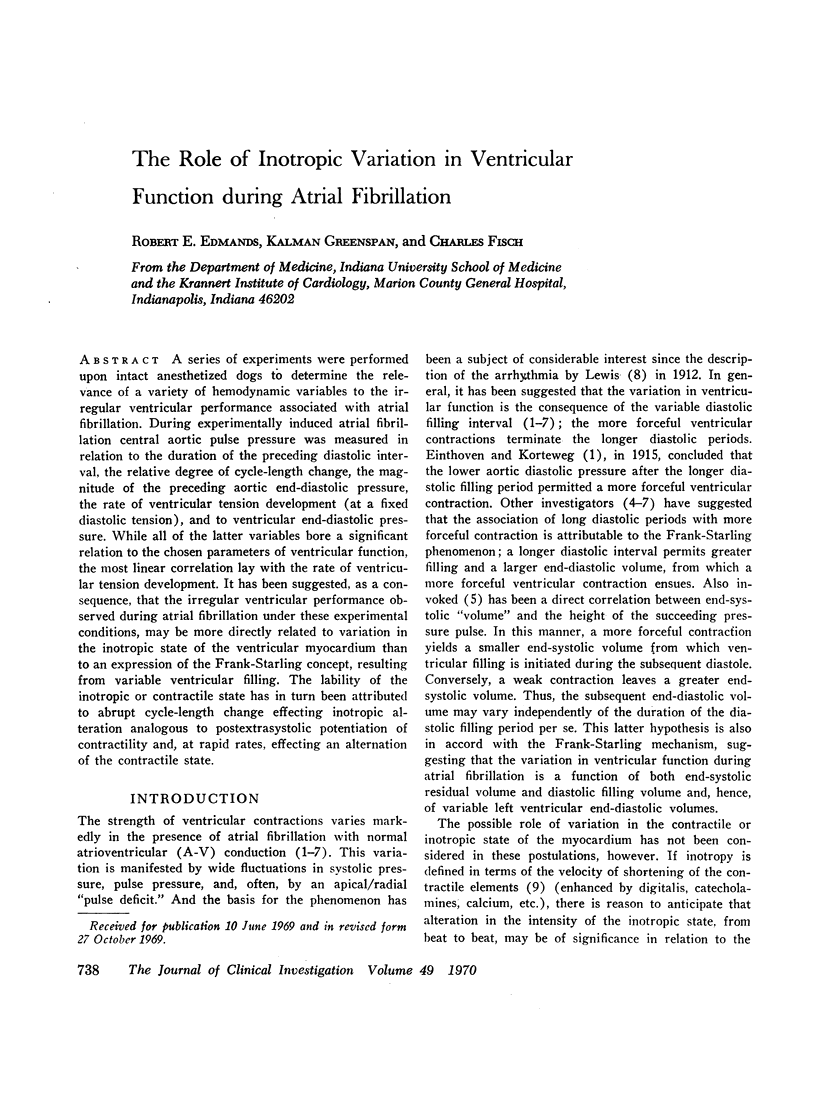
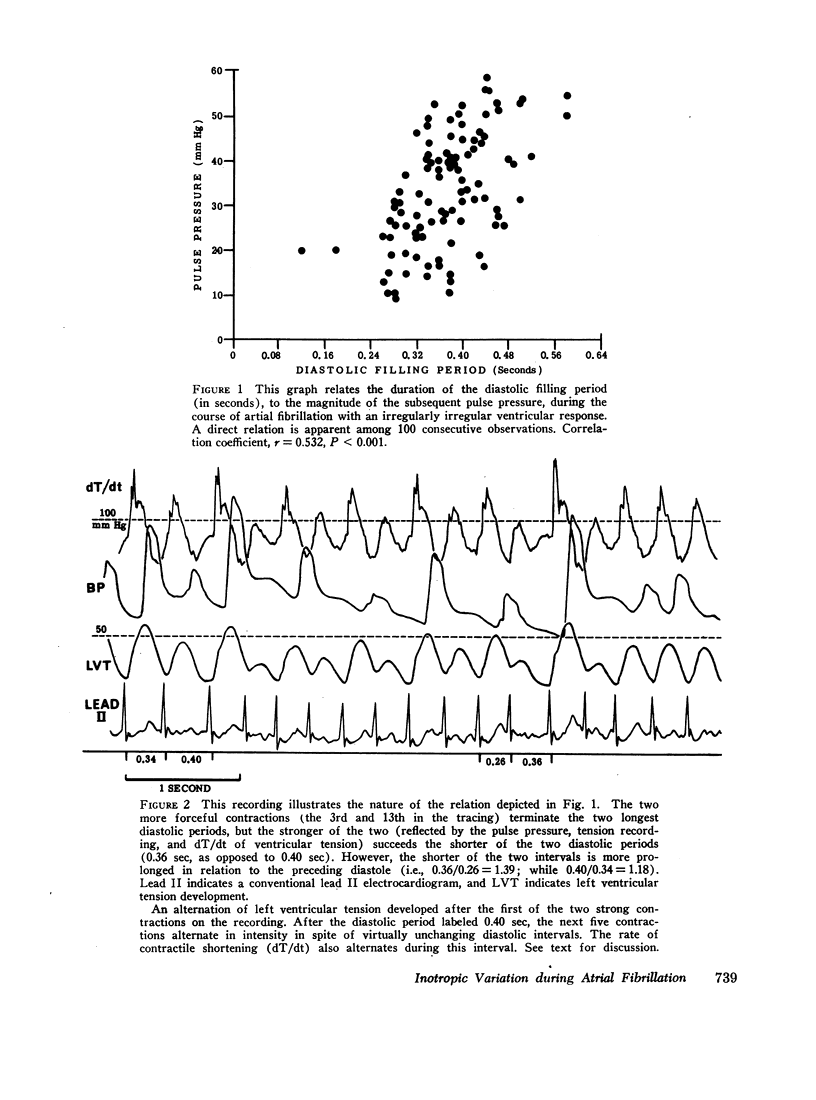
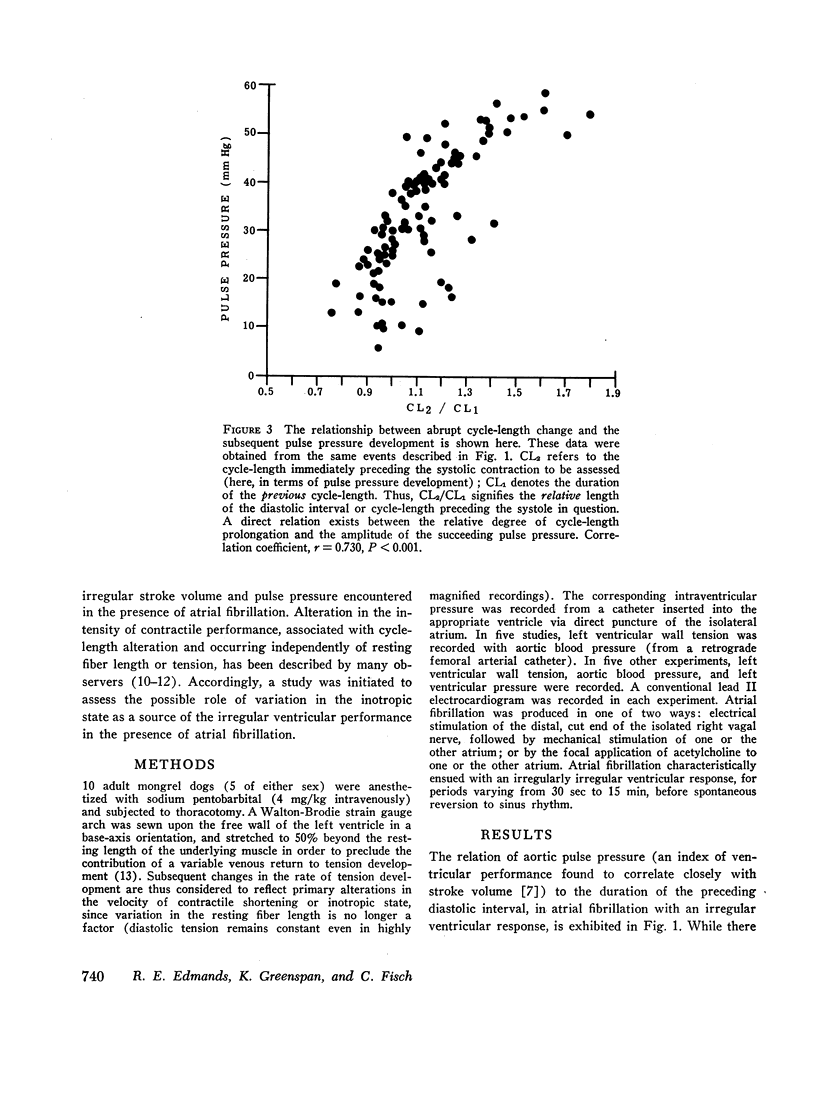
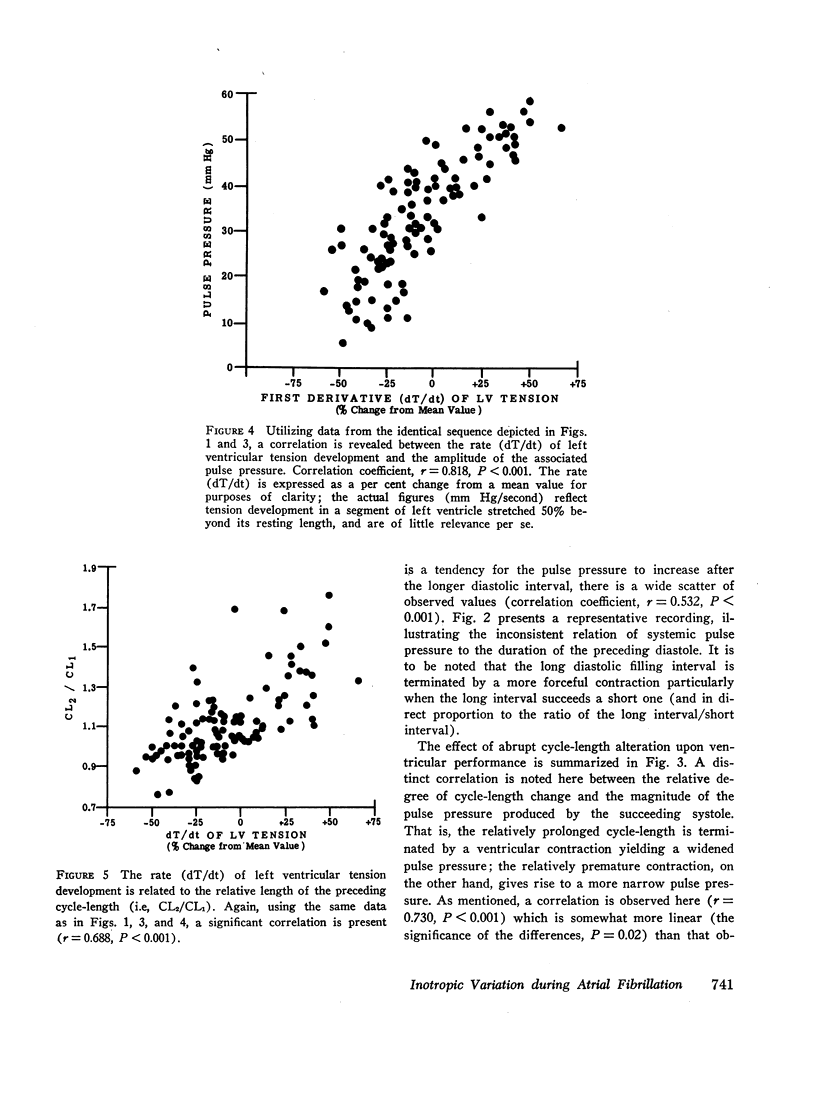
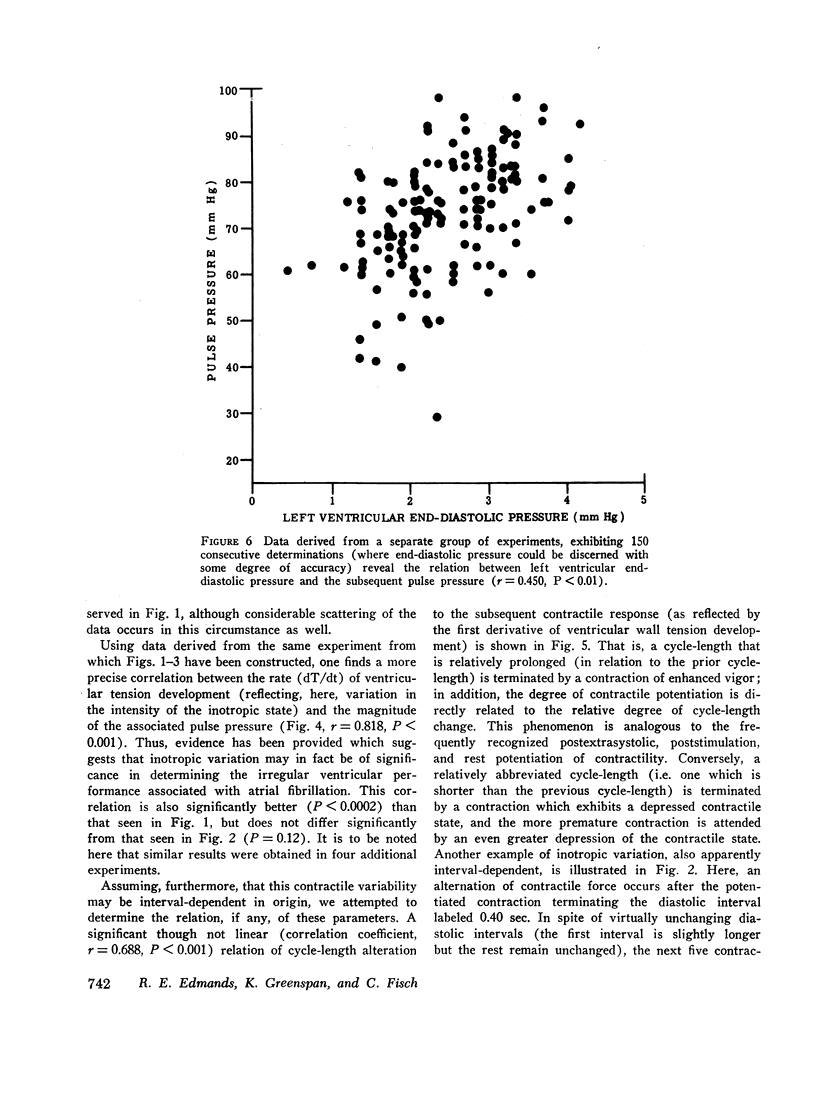
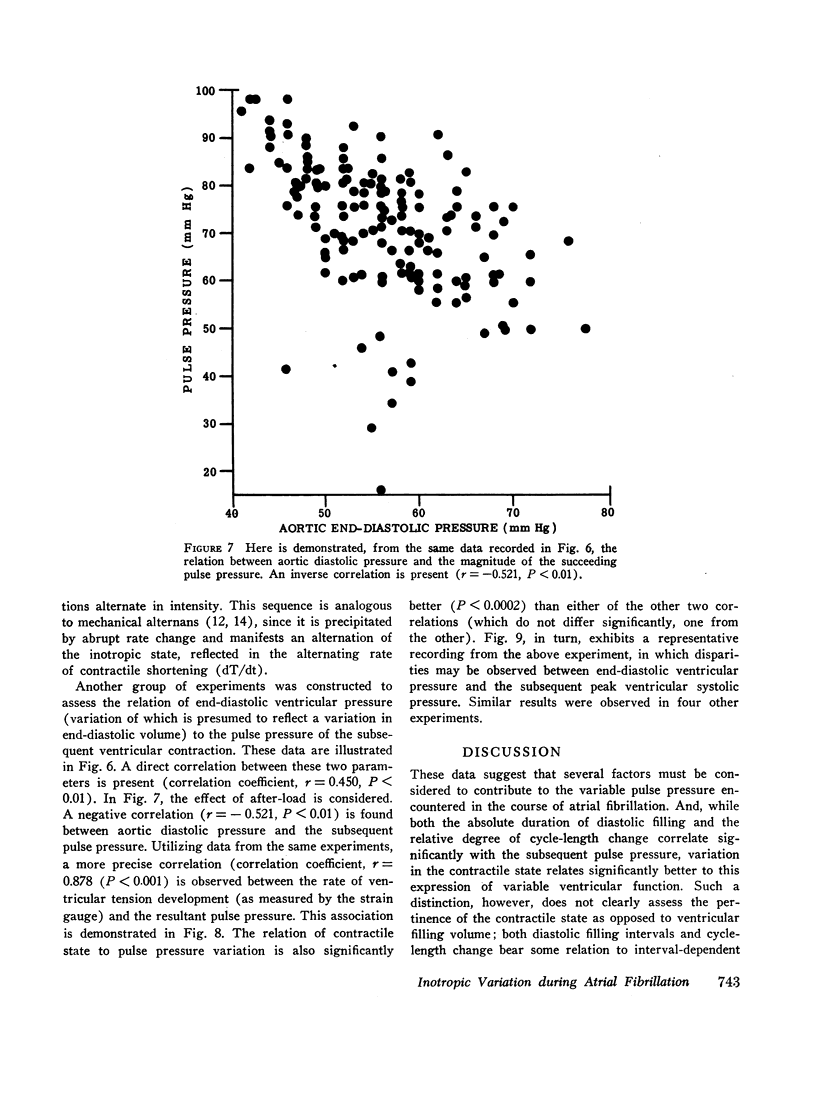
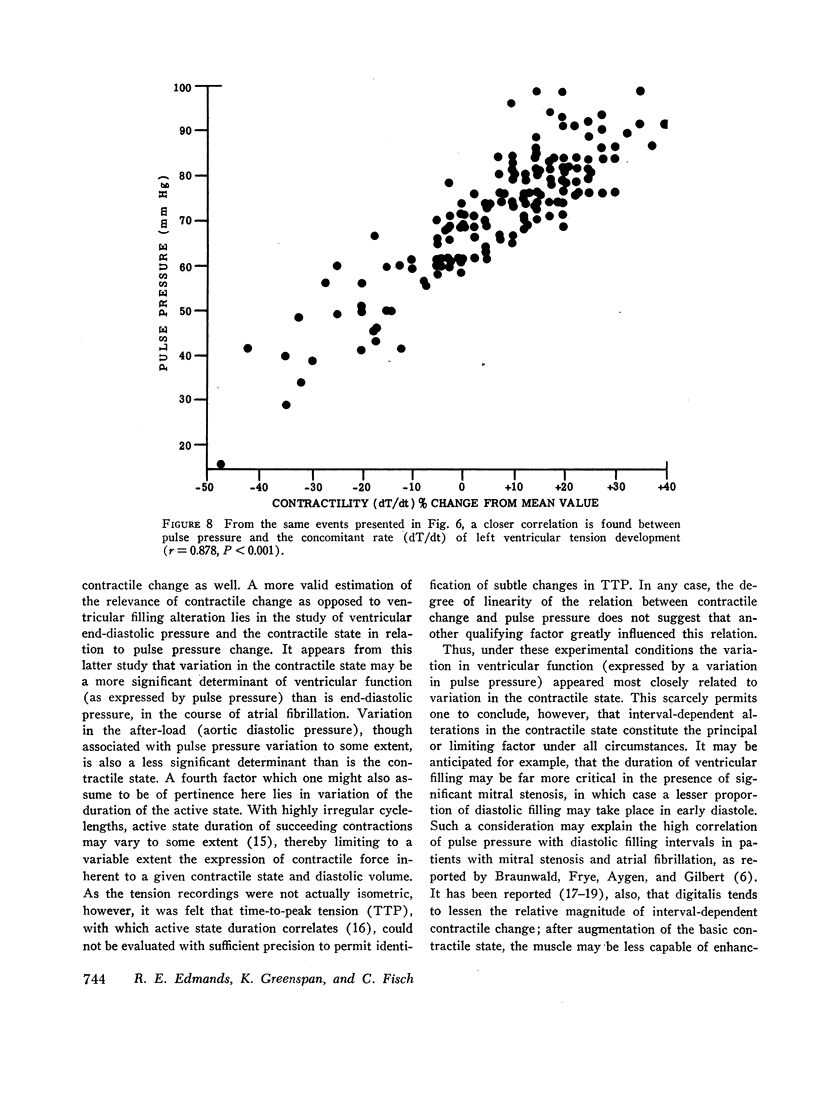
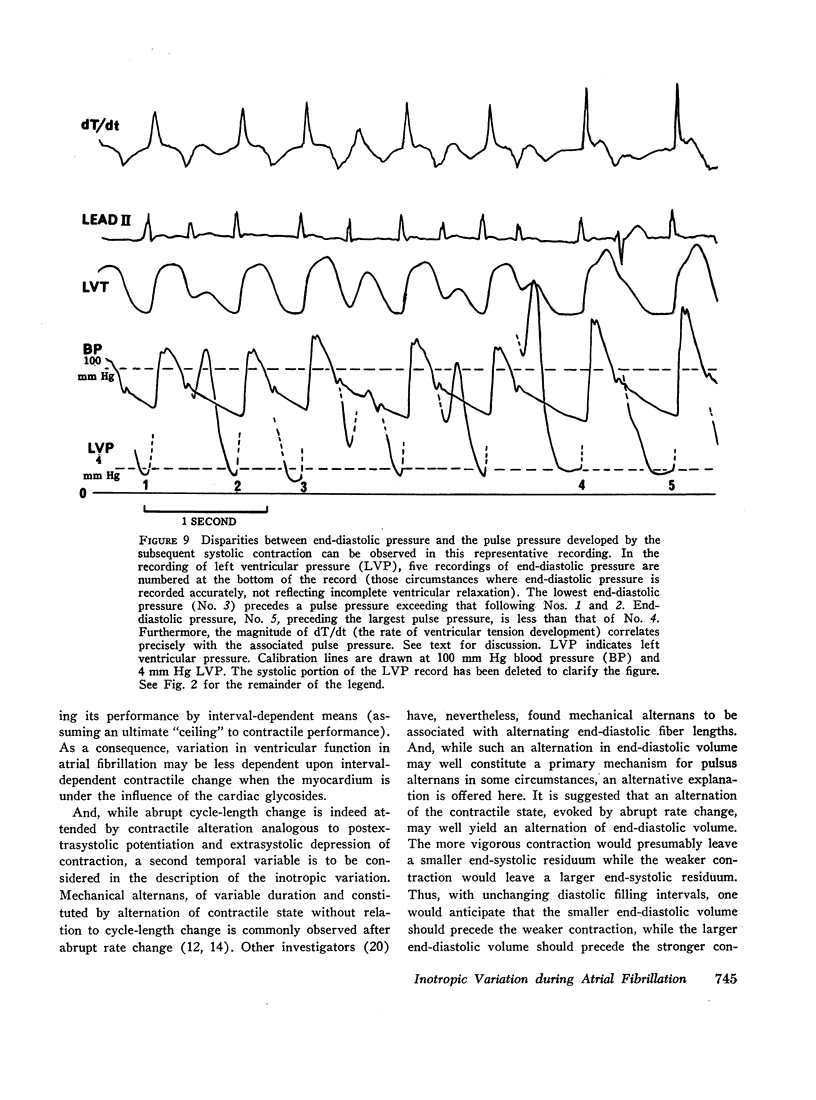
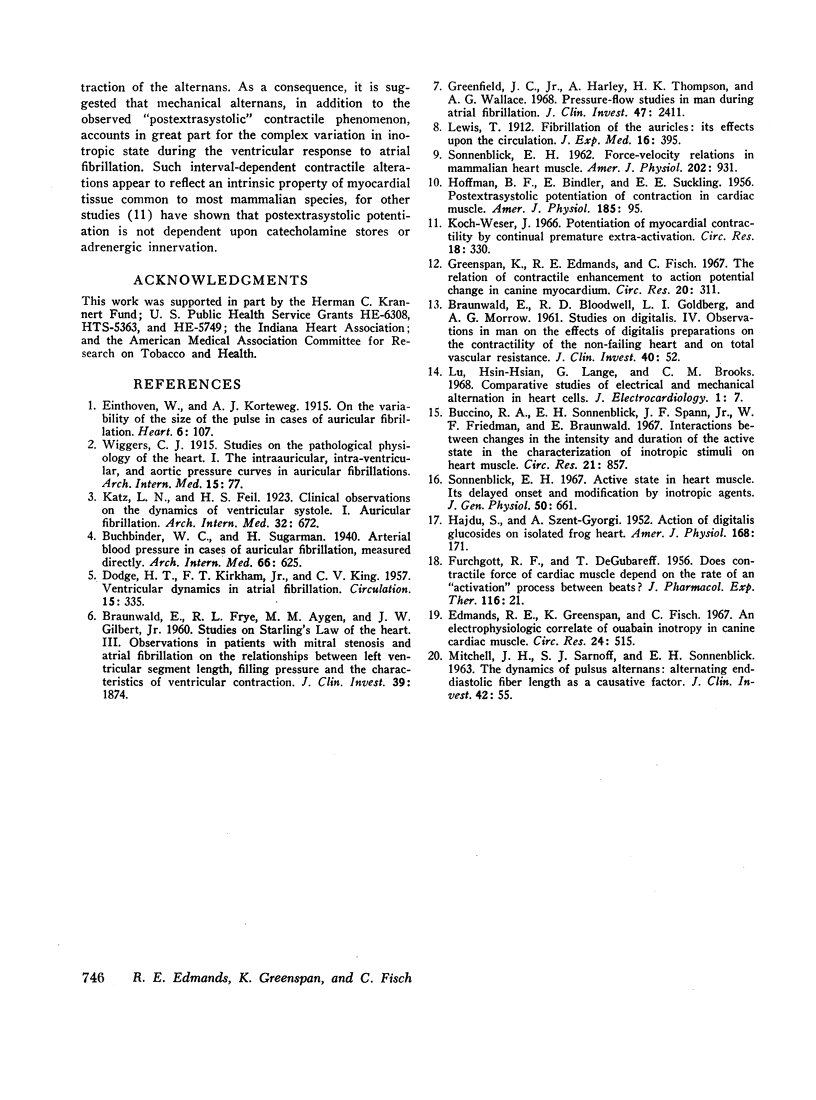
Selected References
These references are in PubMed. This may not be the complete list of references from this article.
- Braunwald E., Bloodwell R. D., Goldberg L. I., Morrow A. G. STUDIES ON DIGITALIS. IV. OBSERVATIONS IN MAN ON THE EFFECTS OF DIGITALIS PREPARATIONS ON THE CONTRACTILITY OF THE NON-FAILING HEART AND ON TOTAL VASCULAR RESISTANCE. J Clin Invest. 1961 Jan;40(1):52–59. doi: 10.1172/JCI104236. [DOI] [PMC free article] [PubMed] [Google Scholar]
- Braunwald E., Frye R. L., Aygen M. M., Gilbert J. W. STUDIES ON STARLING'S LAW OF THE HEART. III. OBSERVATIONS IN PATIENTS WITH MITRAL STENOSIS AND ATRIAL FIBRILLATION ON THE RELATIONSHIPS BETWEEN LEFT VENTRICULAR END-DIASTOLIC SEGMENT LENGTH, FILLING PRESSURE, AND THE CHARACTERISTICS OF VENTRICULAR CONTRACTION. J Clin Invest. 1960 Dec;39(12):1874–1884. doi: 10.1172/JCI104211. [DOI] [PMC free article] [PubMed] [Google Scholar]
- Buccino R. A., Sonnenblick E. H., Spann J. F., Jr, Friedman W. F., Braunwald E. Interactions between changes in the intensity and duration of the active state in the characterization of inotropic stimuli on heart muscle. Circ Res. 1967 Dec;21(6):857–867. doi: 10.1161/01.res.21.6.857. [DOI] [PubMed] [Google Scholar]
- DODGE H. T., KIRKHAM F. T., KING C. V. Ventricular dynamics in atrial fibrillation. Circulation. 1957 Mar;15(3):335–347. doi: 10.1161/01.cir.15.3.335. [DOI] [PubMed] [Google Scholar]
- Edmonds R. E., Greenspan K., Fisch C. An electrophysiologic correlate of ouabain inotrophy in canine cardiac muscle. Circ Res. 1967 Oct;21(4):515–524. doi: 10.1161/01.res.21.4.515. [DOI] [PubMed] [Google Scholar]
- Greenfield J. C., Jr, Harley A., Thompson H. K., Wallace A. G. Pressure-flow studies in man during atrial fibrillation. J Clin Invest. 1968 Oct;47(10):2411–2421. doi: 10.1172/JCI105924. [DOI] [PMC free article] [PubMed] [Google Scholar]
- Greenspan K., Edmonds R. E., Fisch C. The relation of contractile enhancement to action potential change in canine myocardium. Circ Res. 1967 Mar;20(3):311–320. doi: 10.1161/01.res.20.3.311. [DOI] [PubMed] [Google Scholar]
- HAJDU S., SZENT-GYORGYI Action of digitalis glucosides on isolated frog heart. Am J Physiol. 1952 Jan;168(1):171–175. doi: 10.1152/ajplegacy.1951.168.1.171. [DOI] [PubMed] [Google Scholar]
- HOFFMAN B. F., BINDLER E., SUCKLING E. E. Postextrasystolic potentiation of contraction in cardiac muscle. Am J Physiol. 1956 Apr;185(1):95–102. doi: 10.1152/ajplegacy.1956.185.1.95. [DOI] [PubMed] [Google Scholar]
- Koch-Weser J. Potentiation of myocardial contractility by continual premature extra-activations. Circ Res. 1966 Mar;18(3):330–343. doi: 10.1161/01.res.18.3.330. [DOI] [PubMed] [Google Scholar]
- Lewis T. FIBRILLATION OF THE AURICLES: ITS EFFECTS UPON THE CIRCULATION. J Exp Med. 1912 Oct 1;16(4):395–420. doi: 10.1084/jem.16.4.395. [DOI] [PMC free article] [PubMed] [Google Scholar]
- Mitchell J. H., Sarnoff S. J., Sonnenblick E. H. THE DYNAMICS OF PULSUS ALTERNANS: ALTERNATING END-DIASTOLIC FIBER LENGTH AS A CAUSATIVE FACTOR. J Clin Invest. 1963 Jan;42(1):55–63. doi: 10.1172/JCI104696. [DOI] [PMC free article] [PubMed] [Google Scholar]
- SONNENBLICK E. H. Force-velocity relations in mammalian heart muscle. Am J Physiol. 1962 May;202:931–939. doi: 10.1152/ajplegacy.1962.202.5.931. [DOI] [PubMed] [Google Scholar]
- Sonnenblick E. H. Active state in heart muscle. Its delayed onset and modification by inotropic agents. J Gen Physiol. 1967 Jan;50(3):661–676. doi: 10.1085/jgp.50.3.661. [DOI] [PMC free article] [PubMed] [Google Scholar]


